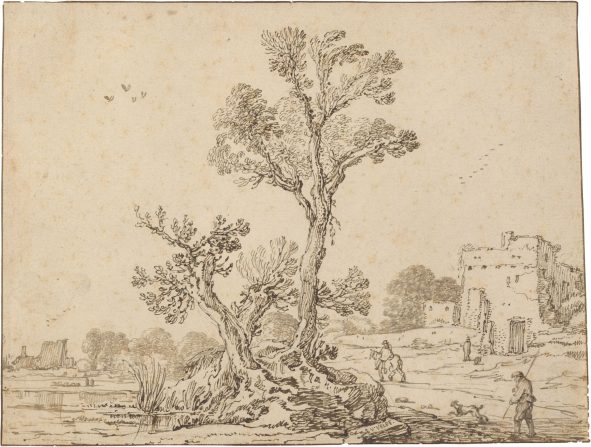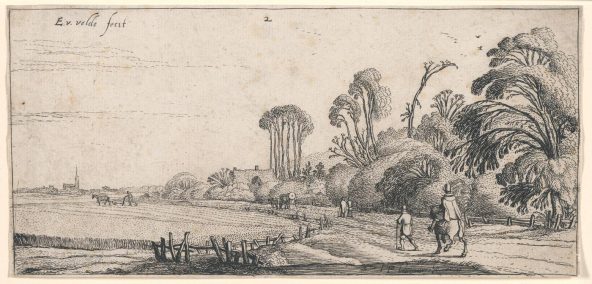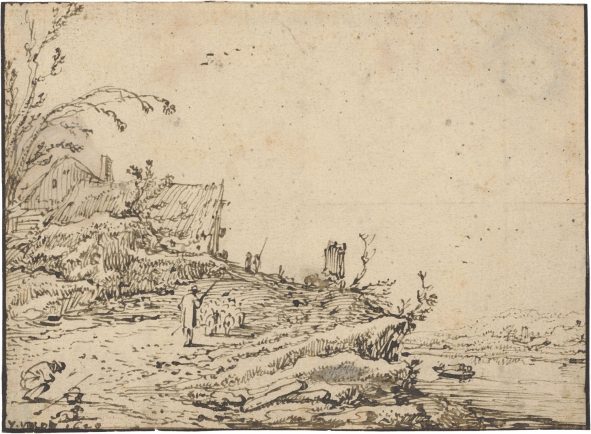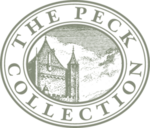Article: Esaias van de Velde I and the Birth of Dutch Landscape
Focus on the Peck Feature
This installation, curated by Robert Fucci, the Ackland’s Peck Collection Research Fellow, focuses on works by the Dutch artist Esaias van de Velde I (1587-1630), one of the earliest pioneers to develop realistic and plausible landscape scenes as independent subjects. These works, distinctive in their own right, set the stage for generations of artists who followed. These drawings from the Peck Collection on display are some of his earliest in the United States.
In the opening decades of the seventeenth century, a revolutionary new style of landscape art emerged in the Netherlands that focused on the appearance of the local surroundings. While naturalistic drawings or working en plein air (outdoors) was not an entirely new idea, it had never before achieved such a degree of popularity as it did among Dutch artists in the generation that just preceded Rembrandt.
Esaias van de Velde I (1587-1630), one of the most important of these artists, is often credited for being among the very first to produce paintings, drawings, and prints of realistic Dutch landscapes. Born in Amsterdam, he moved to Haarlem as a young man in 1609, the same year that the Netherlands (then called the United Provinces) attained its independence from Spain and became a sovereign nation for the first time. It is certainly no accident that artists in this new republic began to explore the beauty of their own country in the 1610s, especially the woods and dunes around Haarlem, which were particularly famous for their timeless, peaceful appeal and rustic charm.
The two drawings by Esaias van de Velde I on display here with one of his etchings, are among the earliest and most significant works of his in any United States public collection.
A Cluster of Trees near a Ruin

Esaias van de Velde, Dutch, 1587-1630, A Cluster of Trees near a Ruin, c. 1620-25, Pen and two shades of brown ink over traces of black chalk on paper; framing lines in brown ink. The Peck Collection, 2017.1.86.
See A Cluster of Trees near a Ruin in more detail here.
The artist has made the three trees in the foreground the main subject of this work, contrasting the twisted pair of stunted older trees on the left with the taller and leafier one on the right. Two different types of ink can be seen in this drawing. A lighter shade and looser strokes for the background elements heightens the sense of perspectival depth. Enhancing this sense of space is the diagonal road leading into the distance, an archetypal component of Van de Velde’s compositions.
Landscape with a Rider and Pedestrian [on Road to Left of Trees and to Right of a Field (Hillegom)]

Esaias van de Velde, Dutch, 1587-1630, Landscape with a Rider and Pedestrian [on Road to Left of Trees and to Right of a Field (Hillegom)], etching retouched with burin on paper. The William A. Whitaker Foundation Art Fund, 2003.20.1
Although trained as a painter, Van de Velde also made prints of his landscape designs. Here he uses the technique of etching, which allows a great degree of freedom of line. This is especially seen in the short dashed strokes that make up the foliage of the trees, the grain in the fields, and even the thatching of the roof of the cottage nestled in the middle distance. The number 2 appears at the top because this sheet was one of a series of prints by the artist that celebrates the wide flat spaces and crisp open skies of his country.
River Landscape on a Hill

Esaias van de Velde, Dutch, 1587-1630, River Landscape on a Hill, 1620, pen and brown ink on paper. The Peck Collection, 2017.1.87
See River Landscape on a Hill in more detail here.
In this drawing, Van de Velde depicts a shepherd driving his flock up a rise in an embankment. The hilly nature of this work suggests a location further south or east in the Netherlands, though he could have created it from his imagination while giving it a realistic cast. The man squatting to relieve himself in the lower left corner adds an element of humor to the scene. An especially amusing touch is the presence of an outhouse at the crest of the hill, which the traveler either missed seeing or could not be bothered to reach!
Robert Fucci, Peck Collection Research Fellow
